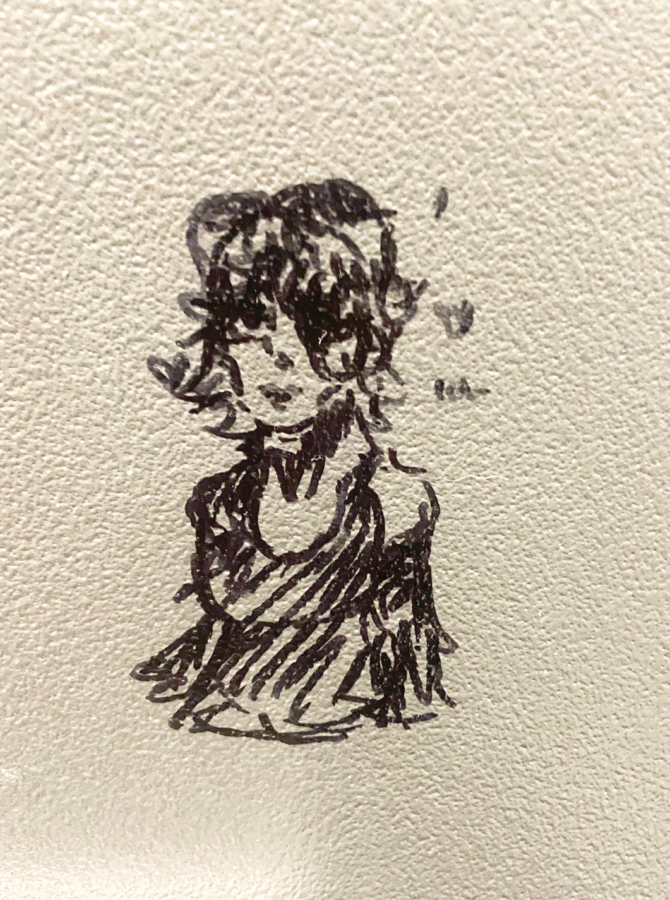Vandalism clutters stalls, impacts school community
McDaniel, like any school, is home to vandalism. On any day, someone could walk through the school and find hundreds of examples.
Vandalism, described by Oxford Languages’ dictionary as involving deliberate destruction of or damage to public or private property, can be quite easy to spot. One of the most common places to see vandalism in the school is in the bathrooms, where there are no cameras. Junior Aidan Ehrismann can attest to this.
“I don’t really notice [vandalism] that much just walking around the halls, but I notice it the most in the bathrooms,” Ehrismann said.
While people are aware of the vandalism and graffiti in the school, teenagers don’t always voice their opinion on it. Social studies teacher Amanda Alonso states that the staff seem to talk about it more than students.
“When I talk to other teachers, they have strong feelings about vandalism,” Alonso said. “When I talk to students, the students I talk to, they’re offended, but those are just the vocal ones. But there are other students that don’t talk about it, I assume that means it’s not an issue for them.”
Alonso adds that because they don’t talk about it she assumes they don’t notice it.
There doesn’t seem to be a school-wide conversation in the school about vandalism and the conditions of the bathrooms right now.
While some may feel students simply don’t care or pay attention to it, those that do can have quite varying opinions. These opinions can hold a mixture of positive and negative views.
“I think that depending on the vandalism it could be a form of self-expression, but I think that breaking stuff just to break stuff is annoying,” Ehrismann explained.
The most prevalent form of vandalism is graffiti, which, according to Oxford Languages’ dictionary, is writing or drawings scribbled, scratched or sprayed illicitly on a wall or other surface in a public place.
While Ehrismann said that graffiti can be an art form, others believe it can pose a danger to the school and students. This is exemplified by some of the students leaving contact or social information written on bathroom walls for any stranger to freely see and use.
This can be dangerous because the context that these messages are left in could lead others to harass the people who’s contact information was written, which may not even belong to that of the person that wrote it. But students aren’t the only ones who are being affected by vandalism in the school, as are staff.
“I think we’re not thinking about the impact that sort of thing has on other people in the building,” vice principal Travis Johnson said. “Someone has to put their time in, instead of doing other things that they’re actually paid to do.”
Johnson highlighted the situation the custodians are forced into.
“Cindy, our lead custodian, has been working a long time, and she should not be breaking her back to clean up graffiti that someone’s just writing just cause they’re not really thinking about the impact that has on someone else,” Johnson said.
This is a problem that Johnson is taking very seriously.
When asked if they cared about the extra work put on the custodial team, an anonymous student who has graffitied the bathroom stalls of McDaniel said, “No, it gets them more hours to be paid more.”
The belief that they would get more pay is a misconception though, as custodians work at the school for a set amount of hours and get paid accordingly.
According to Johnson, the ordeals suffered by the custodial team are not the only negative effects of vandalism. It also leaves a bad perception of the school.
“People in the community come in, they use the bathrooms, and they see graffitied up walls, that sends a message to them on how we operate as a building and a community,” Johnson explained.
While basic graffiti is seen as a negative thing to many visitors just by itself, it doesn’t stop there. Many instances of graffiti in the bathrooms contain slurs, threats, inappropriate imagery or even charts ranking the body parts of women. And while some see these as harmless jokes, others like Alonso and Johnson believe that these instances can be harmful and can reflect the school in a negative way.
Some of the students, like the anonymous student, vandalize the school not expecting to be caught and assume the harshest punishment to be detention.
“I don’t think I’m gonna get caught, it doesn’t feel like that terrible of a crime,” the anonymous source said.
In stark contrast to this, Johnson made it explicitly clear that vandalism is not something that the school takes lightly, and not something nearly as easy to get away with as many would assume.
“There are consequences for vandalism, so if we catch you, which we do on a regular basis, big thanks to all the cameras, consequences can vary,” Johnson said. “It depends on the damage, usually it’s cleaning up and or they have to pay for the damage that they committed.”
While some students, like the anonymous source, may not believe or take seriously the warning stated by him, Johnson reaffirmed with absolute certainty that they are serious about this matter.
“We’ll sit on camera sometimes and watch for students…we can figure out if it was them, and then we’ll give a consequence for it, and we’ll put the time into that depending what was on the walls,” Johnson said.
There are some students that seem to believe graffiti is either a non-problem or a form of teen expression. While others believe student awareness of vandalism and its effects are at a problematic low.
Although overall, Johnson has made it clear that they are looking into curbing the problem as they see it.
Stone is a senior (he/him) and he is passionate about knowledge, music and science. People describe him as well thought-out, introverted and funny (“I hate him” - his friends). He loves being a journalist because he likes to spread awareness and information on unknown topics.
Maxson Peters (he/him) is a senior and is also the Managing Editor. He loves music, making comics, and hiking! You can find him light corners of the school because he is scared of the dark.



